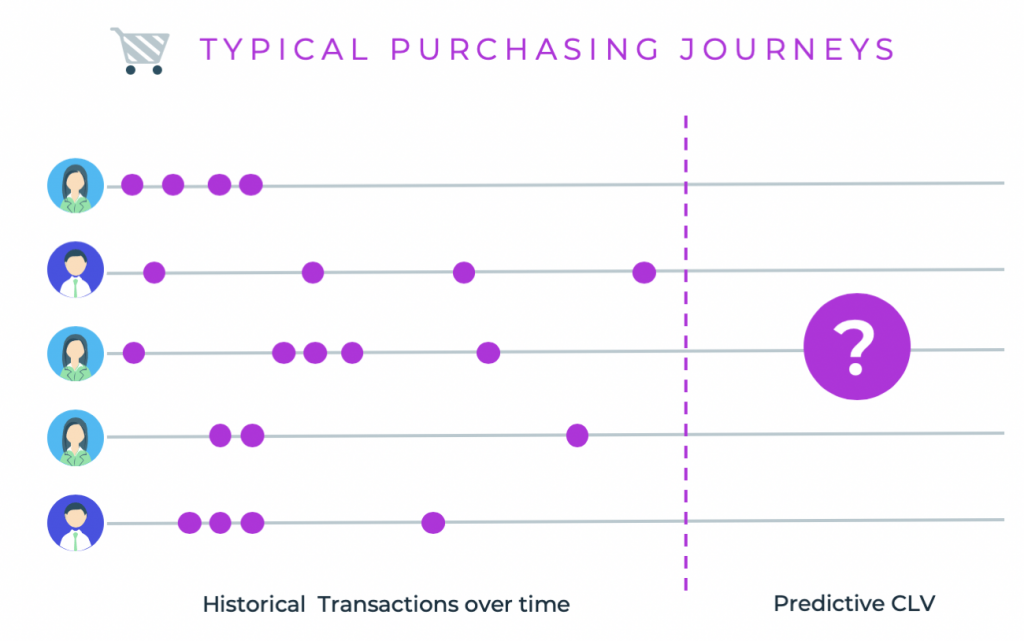Crafting a Positive Customer Experience: Why It Matters
Providing a positive customer experience has become a key priority for many businesses today. With more options than ever before, customers can easily take their business elsewhere at the first sign of a negative experience. However, delivering exceptional experiences also presents significant opportunities to attract new customers, build loyalty and advocacy, and drive growth. This article will explore what constitutes a positive customer experience, why it has become so critical, and how organisations can work to enhance it continually.
Table of Contents
Defining the Positive Customer Experience

A positive customer experience is about consistently meeting or exceeding customer expectations across every interaction. Customers today have much higher expectations shaped by leaders in customer experience, such as Amazon, Netflix, Uber, and more. Consumers have come to expect seamless, personalised, proactive, and effortless engagements tailored specifically to their needs.
Several key elements contribute to positive customer experiences:
- Personalisation – Understanding customers as individuals and customising engagements to match their preferences
- Proactivity – Anticipating customer needs and addressing them preemptively
- Seamlessness – Connecting processes across channels to minimise customer effort
- Responsiveness – Reacting swiftly to customer requests and concerns
- Empathy – Demonstrating genuine care, concern and understanding for the customer
Ultimately, though, the customer judges whether an experience is positive. Organisations must continually gather feedback and insights to ensure they are delivering based on customer perceptions.
The Rising Importance of Customer Experience
While customer service and satisfaction have always been important, the focus on holistically managing the end-to-end customer experience is relatively new. A few key factors have driven this shift:
The Experience Economy
Customers today are not just buying products and services. They are purchasing personalised experiences that meet their emotional and social needs. And they are willing to pay a premium for positive ones. Customer experience has become a critical competitive differentiator that businesses cannot ignore.
Digital Disruption
Mobile, social media, AI and other emerging technologies have changed consumer behaviours and expectations. By effortlessly switching between channels, comparing offers, and engaging with brands online, today’s digital-savvy consumers have much higher standards for experience quality.
Customer Empowerment
Never before have customers held so much power. They are better informed about their options with access to detailed product information and peer reviews. Meanwhile, review sites, social media, and messaging give them an influential public voice. Delivering poor customer experiences today can directly impact brand reputation and loyalty.
As experience takes on greater strategic weight, 89% of business leaders say competing mainly on customer experience is the priority today (Gartner). Those who fail to prioritise it do so at their peril.
Improving Customer Lifetime Value Through Experience

Customer experience efforts are precious investments because positive experiences drive increased customer lifetime value in multiple ways:
Increased sales
- 33% higher average order value (SuperOffice)
- 23% more annual revenue per customer (PwC)
Improved loyalty & advocacy
- Brands with above-average CX scores have seen 60% greater revenue growth over three years compared to brands with below-average scores (KPMG)
- 89% of customers say they’d likely make another purchase based on a positive experience (Shields)
Reduced churn
- Reducing churn rates by just 5% can boost profits by 25-95% (Bain & Co)
- Poor customer experiences account for over 15% of customer churn (Gladly)
Lower costs
- It costs five times more to attract new customers than to retain existing ones (Hubspot)
- Customer experience leaders have up to 20% lower operating costs (Forrester)
Simply put, delivering positive customer experiences fuels growth by attracting and retaining high-value customers in a cost-efficient way. As such, CX quality is strongly correlated with business growth and should be a top priority.
| Impact Area | Statistic |
| Increased Sales | 33% higher average order value |
| 23% more annual revenue per customer | |
| Improved Loyalty & Advocacy | 60% greater revenue growth over three years |
| 89% likely to make another purchase | |
| Reduced Churn | Reducing churn by 5% boosts profits by 25-95% |
| Poor experiences cause 15%+ of churn | |
| Lower Costs | 5X more to acquire than retain customers |
| 20% lower operating costs |
Strategies for Improving Customer Experiences
Transforming customer experience requires customer obsession to permeate throughout the organisation. While specific improvement strategies will differ across companies, five foundational focus areas for driving positive CX are below.
1. Map Key Customer Journeys
The first step is understanding existing customer journeys across the most critical interactions like onboarding, account management, and support. Document key steps and pain points through customer research. Also, assess perceptions, emotions and effort associated with each journey to establish baseline CX performance.
2. Empower Customer-Facing Roles
Employees in customer-facing roles like sales, service and support have the most significant impact on experience perceptions. Yet many lack visibility into customer history and context. Ensure these teams can access customer data, insights and tools to identify needs, resolve issues swiftly and deliver personalised experiences.
3. Improve Omnichannel Consistency
With customers engaging across many channels, experiences must feel personalised, proactive and connected across each touchpoint. Take inventory of processes, policies, content and capabilities across channels to identify and address inconsistent experiences.
4. Establish Customer Journey Governance
Managing customer experience requires cross-departmental collaboration as journeys span sales, marketing, service and more. Build executive support for central governance to align on CX standards, drive improvements across journeys, and ensure consistent measurement.
5. Continually Gather VoC Insights
Voice-of-customer programs like surveys, interviews, and social media monitoring are critical to measuring experience quality and driving strategic priorities. Create formal feedback loops to connect insights to decisions and ensure experiences evolve based on the latest customer inputs.
Driving Change Top-Down
Improving customer experience requires strong, committed leaders who role model cx-centric behaviour and rally the company around this shared purpose of delighting customers.
Lead with empathy
Senior execs should immerse themselves directly in the customer experience by regularly handling support tickets, taking sales calls, or visiting stores.
Communicate constantly
Talk about cx in company meetings, events, and broadcasts. Share inspiring customer success stories. Publicly recognise employees delivering exceptional experiences.
Tie cx to incentives.
Customer satisfaction or Net Promoter Scores are critical metrics in bonus calculations and performance reviews. Financial incentives tied directly to cx can powerfully reinforce behaviour.
Allocate resources
Provide teams working directly with customers the staffing, tools, authority and resources needed to resolve issues quickly. Prioritise cx in budget decisions.
Continuously improve
Keep surveying customer needs and pain points. Don’t be complacent. Invest in iteration and continuous enhancement of experiences.
While each leader will develop their approach, truly valuing customers must permeate all messaging and actions from the executive suite.
Using Technology to Enhance Experiences

Rapidly advancing technology opens new possibilities for delighting customers in personalised, proactive ways.
Harness data
Use analytics to deeply understand customer needs, predict future behaviours, and deliver hyper-relevant offers or information.
Embrace automation
Leverage AI tools to quickly handle routine customer inquiries, allowing staff to focus on complex, emotion-laden issues.
Offer self-service
Provide DIY tools to answer basic questions or make account changes quickly without needing a back-and-forth with support reps.
Personalise engagement
Use segmentation and past interactions to tailor messaging to individual customer needs and preferences.
The table below summarises vital technologies and sample use cases:
| Technology | Use Cases |
| Predictive analytics | Understand open-ended feedback at scale, analyse sentiment, and identify pain points. |
| Natural language processing | Understand open-ended feedback at scale, analyse sentiment, and identify pain points |
| AI chatbots | Provide 24/7 assistance for common inquiries |
| Account management portals | Enable self-service for routine account changes |
| Real-time segmentation | Deliver personalised promotions or notifications matched to individual interests. |
While tech plays a key role, human insight and oversight are crucial to empathising with emotional needs that technologies may miss. Leaders must strategically apply tech to remove friction without losing human connection.
Driving Change from the Frontlines
While top-down initiatives set the vision, frontline teams working directly with customers define daily experiences. Empowering them to take ownership is crucial.
Proactively gather feedback
Asking simple open-ended questions at the end of service calls like “How could we have better helped you?” uncovers granular opportunities front liners can quickly act on without extensive approval chains.
Identify quick wins
Encourage frontline staff to continuously think about minor tweaks or process changes that could delight customers, test out ideas, and run with what demonstrates tangible impact.
Share insights upwards
Capture trends in customer needs through call summaries, highlight reports, etc. and feed these to product, marketing and technology partners to drive larger-scale enhancements.
Celebrate and share wins.
When individual reps or locations do something that delights customers, loudly celebrate these wins. Share videos, photos, and stories company-wide to inspire similar behaviour across the org.
While execs set the overall vision, frontline staff closest to the customers have the best vantage point for shaping experiences daily. Tapping into their insights fuels a virtuous cycle of constant learning and improvement.
Essential Capabilities for Delivering Great Experiences

While culture and leadership set the foundation for CX's success, organisations must also cultivate several foundational capabilities:
1. Data Unification
Breaking down data silos provides complete visibility into customer history and interactions across touchpoints. This 360-degree customer view enables personalisation and proactive care.
2. AI & Automation
Employing AI and robots for tasks like chatbots, predictive analytics, and process automation maximises human effort in higher-judgment areas that build emotional connections.
3. Customer Feedback Systems
Building infrastructure to gather and analyse VoC insights continuously is critical for understanding customer perceptions, effort, emotions and priorities.
4. Agile Processes
An agile, iterative approach to improving experiences enables organisations to adapt quickly based on customer feedback rather than long product development cycles.
5. Customer-Centric Culture
While technology provides capabilities, culture and staff engagement ultimately determine experience success. Building shared CX visions, customer obsession, and emotional connection at all levels is critical.
With 73% of customers pointing to experience as an important factor in purchasing decisions (Pwc), getting these foundations right is imperative. Companies leading in these capabilities are positioned to deliver personalised positive experiences at scale.
Common Challenges & How To Overcome Them
Transitioning to a customer-centric organisation focused on end-to-end experiences represents a significant change. Below are common challenges that arise and how leaders can proactively address them:
Obtaining investment – Demonstrating the revenue, cost and competitive advantages positive experiences create helps justify investments. Piloting improvements also builds proof points.
Lack of shared vision -Cascade messages from the top on CX importance alongside training and incentives driving culture change bottom-up.
Channel conflicts – Ensure governance policies elevate customer needs above channel or department KPIs in decision-making.
Data fragmentation – Appoint dedicated roles to drive unified data efforts, ensuring teams can access insights required for personalisation.
Inconsistent metrics – Align on a consistent set of CX metrics and KPIs tied to business objectives to unify reporting, goal-setting and decision-making.
While transformational, taking proactive steps to tackle these barriers will smooth progress towards more positive customer experiences.
Key Metrics to Track
To understand the effectiveness of cx initiatives and identify areas needing improvement, organisations should actively monitor key performance indicators, including:
Customer satisfaction (CSAT) scores
A metric based on surveys asking some variation of “On a scale of 1-10, how satisfied were you with your experience?”. It can be tracked over time.
Net Promoter Score (NPS)
It would measure willingness to recommend the brand to others. Detractors (scores 0-6) are subtracted from Promoters (scores 9-10) to give a -100 to +100 score. High performers strive for NPS > 50.
Customer effort score (CES)
Measures ease of resolving an issue from “very difficult” to “very easy”. Assesses how much unnecessary effort customers had to exert for the experience.
Customer lifetime value (CLV)
Tracks revenue generated from a customer over their entire lifespan with the company – a proxy for loyalty deriving from good experiences driving retention and repeat purchases.
While numeric metrics offer high-level snapshots, always supplement with open-ended qualitative feedback that captures precise customer sentiments and areas needing fine-tuning.
Key Takeaways & Next Steps
- Delivering positive customer experiences must be a strategic priority, given its impact on lifetime value.
- Extraordinary experiences are personalised, proactive, seamless and emotionally resonant.
- Improving journeys requires governance, capabilities like data unification and AI, and continuous customer feedback.
- Overcoming change barriers through proof points, leadership, and policies accelerates progress.
For leaders seeking to enhance CX, first assess key strengths, gaps and opportunities in your customer journeys, capabilities and culture. From there, build executive alignment on the business case for change backed by data. Set a multi-year vision and roadmap addressing the foundational priorities outlined here. Maintaining momentum through regular customer research, continuous improvement sprints, and consistent messaging reinforces CX as a vital growth driver. With focus and commitment, transforming customer experiences delivers invaluable rewards.
Frequently Asked Questions
What are some leading examples of positive customer experiences?
Some top brands that deliver exceptional personalised experiences include Amazon, Netflix, Nike, Ritz Carlton, and American Express. Each anticipates customer needs and preferences to provide effortless, emotionally resonant engagements.
How can you show the business impact of customer experience?
Quantifying metrics like revenue growth, cost reductions and churn rates based on CX performance makes the case for investments. Long-term studies by firms like KPMG and Watermark Consulting also demonstrate the financial impact leaders achieve in customer experience.
How can companies improve customer experiences through technology?
Solutions like CRMs, customer data platforms, cloud-based contact centres, self-service portals, artificial intelligence, analytics, and customer feedback systems provide indispensable capabilities for understanding customers, connecting data, anticipating needs and personalising engagements.
What does it take to transform organisational culture around customer experience?
It requires instilling shared beliefs and behaviours around customer obsession from the top down and bottom up. Leadership messaging and incentives must reinforce CX's importance while training and engagement initiatives empower staff to build emotional connections daily.
How can companies continually improve customer experiences?
Adopting agile, design thinking, and continuous improvement approaches enables organisations to prototype rapidly, gather feedback, and incrementally enhance experiences. Voice-of-customer insights should actively inform subsequent phases of improvement.
Conclusion
Elevating customer lifetime value through positive experiences has become imperative for business growth and profitability. While fulfilling heightened consumer expectations poses challenges, brands leading in capabilities like personalisation and emotionally resonant service reap invaluable rewards in sales, loyalty and efficiencies. Companies can build sustainable competitive differentiation in the experience economy by obsessing over continuously improving journeys—those failing to prioritise risk losing out to rising customer-centric leaders. With people increasingly buying into brands aligned with their values and identity, getting CX right matters more than ever.
